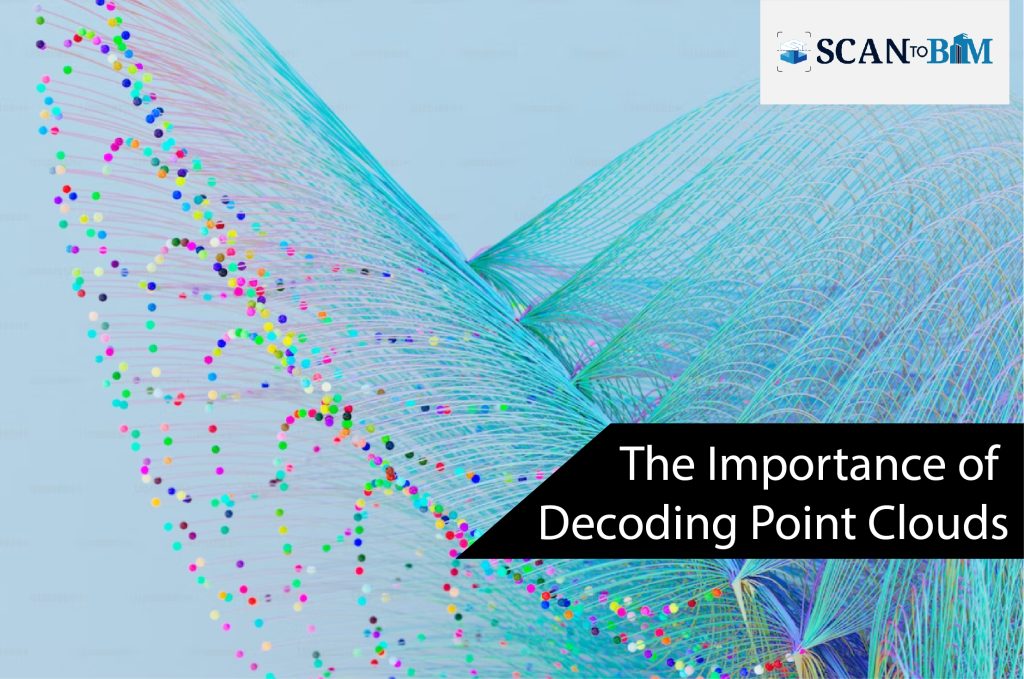
Introduction
Point cloud technology is emerging as an immersive alteration in buildings as well as design industries, altering how we produce, analyze, and regulate building information. Point clouds offer an organizing principle enabling many different applications, notably in Building Information Modelling (BIM) and Scan to BIM Services, by gathering and expressing massive volumes of three-dimensional (3D) data. This blog investigates the essence of point clouds, providing light concerning their revolutionary possibilities and diving into exploring the critical link between point cloud to BIM services.
Understanding Point Clouds
A point cloud comprises an accumulation of data points that symbolizes an object’s or space’s exterior surface within a three-dimensional geographic coordinate system. These points are frequently generated using scanning with lasers as well as photogrammetry techniques, which capture massive amounts of geometric data such as geographical coordinates and color information. Point clouds give a very precise depiction of actual buildings, making comprehensive computerized models possible.
The Power Of Point Clouds in BIM
- Exact As-Built Documentation: Point clouds are essential for precisely recording existing constructions. Architects, engineers, and designers may acquire a full as-built model by scanning the actual environment and altering the results into a point cloud, decreasing errors as well as discrepancies throughout the design and construction phases.
- Augmented Design Visualisation: By incorporating Point Cloud to BIM Services or software, experts may visualize as well as modify extremely intricate and accurate 3D models of buildings. This improves the method of design by giving stakeholders an accurate portrayal of the construction endeavor, allowing them to arrive at thoughtful choices and detect possible disputes or design clashing.
- Clash Detection and Synchronisation: By incorporating point cloud data within BIM services, the identification of clashes and coordination is made possible. Inconsistencies as well as conflicts between the design and the current structure may be found by merging the location cloud data against the intended BIM model, reducing expensive revisions and building mistakes.
- Accurate Quantity Estimation: Point clouds might be utilized to derive exact measures including area, volume, as well as geographical separation, assisting in accurate quantity estimate during purchasing materials as well as expense estimation. This tool enhances project budgeting and scheduling by streamlining the estimation procedure. The need for accurate and comprehensive models for BIM and associated applications is estimated to propel the 3D laser scanning market to $9.56 billion by 2028. (From Grand View Research)
Scan to BIM Services and Point Clouds
Scan-to-BIM services use point cloud technology to transform scanned information through sophisticated BIM models. Scan-to-BIM services provide various benefits by merging three-dimensional laser scanning as well as photographing using BIM workflows:
- Surveys that are quicker and more precise: Traditional surveying methods may be laborious and error-prone. Scan-to-BIM services use point cloud data to acquire precise dimensions quickly, cutting surveying expenses while improving precision.
- Effective Restoration and Renovating: Point cloud data collected by surveying current buildings helps with rehabilitation as well as refurbishing operations. Professionals may use scan-to-BIM services to record exact measurements, analyze the building’s structure, and build a thorough BIM model for optimal implementation and planning. From 2020 to 2027, the worldwide BIM market is expected to exceed $15.06 billion, rising at a CAGR (compound annual growth rate) of 14.9%. (Image courtesy of Fortune Business Insights)
- Clash Detection and Visualisation: Clash detection is made more effective by including point clouds within the BIM process. The comprehensive point cloud data enables improved visualization as well as the detection of incompatibilities among the current structure along with the planned design, resulting in a smooth building process.
- Preservation and heritage conservation: Point cloud technology is critical in ensuring the longevity of ancient buildings as well as cultural sites. Point clouds aid in restoration initiatives, record keeping, and historical investigation by precisely documenting the symmetry of the current building.
- Asset Management and Facility Operations: Point clouds help maintain constructed assets efficiently during their lifespans. Operators may visualize as well as analyze the state of different building parts by incorporating point cloud data within facility management systems, which aids through upkeep preparation, energy savings, as well as space optimization.
Conclusion
Point clouds are the foundation of BIM and Scan to BIM services, providing unparalleled preciseness, visualization capabilities, and data-gathering efficiency. Point cloud to BIM services, with its capacity to record and analyze massive volumes of data, is revolutionizing the construction as well as construction industry by speeding processes, eliminating mistakes, and promoting efficient decision-making. The importance of point clouds in revolutionizing the industry is clear as the worldwide popularity of BIM and scan-to-BIM services grows. Using this technology allows experts to optimize their operations, enhance effectiveness, and produce better project results.